Innovative Photovoltaic Technologies Aiming to Design Zero-Energy Buildings in Different Climate Conditions
Abstract
:1. Introduction
1.1. Energy Needs and Zero-Energy Buildings
1.2. Innovative PV Technologies
1.3. Contribution of This Study
2. Material and Methods
2.1. The Investigated Buildings
2.1.1. Detailed Description of the Buildings and Climatic Conditions
2.1.2. Definition of the Building Envelope U-Values
2.2. HP Modeling
2.2.1. Mathematical Formulation of the Heat Pump
2.2.2. Developed Model for the Heat Pump Simulation
2.3. PV Technology Description and Modeling
2.3.1. General Modeling of the PV
2.3.2. Thermal Modeling of the Simple PV
2.3.3. Thermal Modeling of the Radiative PV
2.3.4. Thermal Modeling of the PCM PV
2.3.5. Thermal Modeling of the Finned PV
2.3.6. Description of the Examined Designs
2.4. Simulation Strategy
3. Results
3.1. Energy Analysis of the Examined Buildings at Different Locations
3.2. Parametric Analysis of the PV
3.3. Dynamic Analysis of the PV—Comparison
4. Discussion
4.1. Buildings’ Thermal Loads
4.2. PV Cooling Techniques
5. Conclusions
- -
- The application of radiative and finned PVs always leads to higher performance compared to simple PV, while the use of PCM has to be selected only in warm climates. The finned PV leads to higher electrical efficiency enhancements which range between 0.58% and 0.89%, while the radiative PVs lead to 0.52% up to 0.71% electrical efficiency enhancements.
- -
- The PCM PVs lead to significantly lower cell temperature levels compared to the other technologies during the summer, but to higher cell temperature levels during the winter. The radiative and the finned designs lead to a bit lower cell temperatures compared to the simple PV configuration.
- -
- For the climatic conditions of Athens and Barcelona, electrical positivity is achievable only with the use of rooftop PVs, in contrast to Munich and Stockholm, where the use of BIPVs is necessary.
- -
- The use of the cooling PV designs can significantly enhance positive electricity production in cases with marginal solar potential. Specifically, for building B1 in Stockholm, the fined PVs in combination with BIPVs led to a 212 kWh electricity surplus, or a 136% increase, in contrast to the use of simple PVs in combination with BIPVs.
Author Contributions
Funding
Institutional Review Board Statement
Informed Consent Statement
Data Availability Statement
Conflicts of Interest
Nomenclature
| A | Surface area, m2 |
| b | Reduction coefficient |
| COP | Coefficient of Performance |
| EER | Energy Efficiency Ratio |
| f | Temperature parameter of the PV, °C m2/W |
| GT | Solar tilted irradiation, W/m2 |
| h | Specific enthalpy, kJ/kg |
| hb | Back PV convective heat transfer coefficient, W/m2 K |
| hin | Inside convection heat transfer coefficient, W/m2 K |
| hout | Outside convection heat transfer coefficient, W/m2 K |
| hu | Upper PV convective heat transfer coefficient, W/m2 K |
| k | Thermal conductivity, W/mK |
| kb | Thermal conductivity of the back material, W/mK |
| kfin | Thermal conductivity of the fin, W/mK |
| L | Length of the thermal bridge, m |
| Lb | Thickness of the back material, m |
| Lfin | Length of the fin, m |
| m | Mass flow rate, kg/s |
| Nfin | Number of the fins |
| NOCT | Nominal Operating Cell Temperature, °C |
| P | Perimeter, m |
| Pel | Electricity, kW |
| Q | Heat rate, kW |
| T | Temperature, °C |
| t | Thickness, m |
| tfin | Thickness of the fin, m |
| Tsky | Sky temperature, K |
| U | Thermal transmittance value, W/m2 K |
| Vw | Wind speed, m/s |
| Wc | Compressor work, kW |
| Wfin | Width of the fin, m |
| Greek symbols | |
| α | Absorptance |
| β | Thermal loss coefficient, K−1 |
| ε | Emmitance |
| ηis,c | Isentropic efficiency of the compressor |
| ηmotor | Motor efficiency of the compressor |
| ηPV | Photovoltaic efficiency |
| ηref | Reference efficiency of the PV cell |
| σ | Stefan-Boltzmann constant (=5.67⋅10−8 W/m2 K4) |
| τ | Cover transmittance |
| Ψ | Linear thermal transmittance value, W/mK |
| Subscripts and Superscripts | |
| abs | Absorbed |
| am | Ambient |
| b | Back surface |
| cell | PV cell |
| cond | Condenser |
| condv | Conduction |
| conv | Convection |
| evap | Evaporator |
| fg | Window glass and frame |
| fin | Fin of the back surface |
| frame | Window frame |
| glass | Window glass |
| loss | Thermal losses |
| m | Mean value |
| melt | Melting point |
| PV | Photovoltaic |
| rad | Radiation |
| sol | Solar |
| tb | Thermal bridge |
| u | Upper surface |
| u,rad | Upper radiative surface |
| Abbreviations | |
| ACH | Air Changes per Hour |
| BAPV | Building Applied Photovoltaic |
| BIPV | Building Integrated Photovoltaic |
| DHW | Domestic Hot Water |
| EU | European Union |
| PCM | Phase Change Material |
| PV | Photovoltaic |
| ZEB | Zero Energy Building |
References
- Energy Statistics—An Overview. Available online: https://ec.europa.eu/eurostat/statistics-explained/index.php?title=Energy_statistics_-_an_overview (accessed on 29 March 2024).
- Final Energy Consumption by Energy Sector in EU|ODYSSEE-MURE. Available online: https://www.odyssee-mure.eu/publications/efficiency-by-sector/overview/final-energy-consumption-by-sector.html (accessed on 29 March 2024).
- Nearly Zero-Energy Buildings. Available online: https://energy.ec.europa.eu/topics/energy-efficiency/energy-efficient-buildings/nearly-zero-energy-buildings_en (accessed on 29 March 2024).
- Renewables—Energy System. Available online: https://www.iea.org/energy-system/renewables (accessed on 29 March 2024).
- Share of Electricity Production from Renewables. Available online: https://ourworldindata.org/grapher/share-electricity-renewables (accessed on 29 March 2024).
- Kim, B.-J.; Kim, S.; Go, M.; Joo, H.-J.; Jeong, J.-W. Applicability Performance Evaluation of Cascade Heat Pump for Building Electrification in Winter. J. Build. Eng. 2024, 82, 108406. [Google Scholar] [CrossRef]
- Li, Y.; Rosengarten, G.; Stanley, C.; Mojiri, A. Electrification of Residential Heating, Cooling and Hot Water: Load Smoothing Using Onsite Photovoltaics, Heat Pump and Thermal Batteries. J. Energy Storage 2022, 56, 105873. [Google Scholar] [CrossRef]
- Fedorczak-Cisak, M.; Radziszewska-Zielina, E.; Nowak-Ocłoń, M.; Biskupski, J.; Jastrzębski, P.; Kotowicz, A.; Varbanov, P.S.; Klemeš, J.J. A Concept to Maximise Energy Self-Sufficiency of the Housing Stock in Central Europe Based on Renewable Resources and Efficiency Improvement. Energy 2023, 278, 127812. [Google Scholar] [CrossRef]
- Kapsalis, V.; Maduta, C.; Skandalos, N.; Bhuvad, S.S.; D’Agostino, D.; Yang, R.J.; Udayraj; Parker, D.; Karamanis, D. Bottom-up Energy Transition through Rooftop PV Upscaling: Remaining Issues and Emerging Upgrades towards NZEBs at Different Climatic Conditions. Renew. Sustain. Energy Transit. 2024, 5, 100083. [Google Scholar] [CrossRef]
- Bellos, E.; Lykas, P.; Tzivanidis, C. Performance Analysis of a Zero-Energy Building Using Photovoltaics and Hydrogen Storage. Appl. Syst. Innov. 2023, 6, 43. [Google Scholar] [CrossRef]
- Bellos, E.; Iliadis, P.; Papalexis, C.; Rotas, R.; Mamounakis, I.; Sougkakis, V.; Nikolopoulos, N.; Kosmatopoulos, E. Holistic Renovation of a Multi-Family Building in Greece Based on Dynamic Simulation Analysis. J. Clean. Prod. 2022, 381, 135202. [Google Scholar] [CrossRef]
- Yu, X.; Chan, J.; Chen, C. Review of Radiative Cooling Materials: Performance Evaluation and Design Approaches. Nano Energy 2021, 88, 106259. [Google Scholar] [CrossRef]
- Radiative Cooling of Solar Cells. Available online: https://opg.optica.org/optica/fulltext.cfm?uri=optica-1-1-32&id=296235 (accessed on 18 April 2024).
- Zhao, B.; Hu, M.; Ao, X.; Chen, N.; Pei, G. Radiative Cooling: A Review of Fundamentals, Materials, Applications, and Prospects. Appl. Energy 2019, 236, 489–513. [Google Scholar] [CrossRef]
- Nguyen, H.T.; Nguyen, T.T.; Tran, T.T.; Bang, J.; Kumar, M.; Kim, J.; Yun, J.-H. Colour-Passive Radiative Cooling in Optoelectronics with Silver/Quantum Dot Decorated Silica Multifunctional Hybrid Structures. Chem. Eng. J. 2024, 488, 150840. [Google Scholar] [CrossRef]
- Li, Z.; Ahmed, S.; Ma, T. Investigating the Effect of Radiative Cooling on the Operating Temperature of Photovoltaic Modules. Sol. RRL 2021, 5, 2000735. [Google Scholar] [CrossRef]
- Ma, T.; Zhao, J.; Li, Z. Mathematical Modelling and Sensitivity Analysis of Solar Photovoltaic Panel Integrated with Phase Change Material. Appl. Energy 2018, 228, 1147–1158. [Google Scholar] [CrossRef]
- Sharma, A.; Tyagi, V.V.; Chen, C.R.; Buddhi, D. Review on Thermal Energy Storage with Phase Change Materials and Applications. Renew. Sustain. Energy Rev. 2009, 13, 318–345. [Google Scholar] [CrossRef]
- Arıcı, M.; Bilgin, F.; Nižetić, S.; Papadopoulos, A.M. Phase Change Material Based Cooling of Photovoltaic Panel: A Simplified Numerical Model for the Optimization of the Phase Change Material Layer and General Economic Evaluation. J. Clean. Prod. 2018, 189, 738–745. [Google Scholar] [CrossRef]
- Nižetić, S.; Arıcı, M.; Bilgin, F.; Grubišić-Čabo, F. Investigation of Pork Fat as Potential Novel Phase Change Material for Passive Cooling Applications in Photovoltaics. J. Clean. Prod. 2018, 170, 1006–1016. [Google Scholar] [CrossRef]
- Grubišić Čabo, F.; Nižetić, S.; Giama, E.; Papadopoulos, A. Techno-Economic and Environmental Evaluation of Passive Cooled Photovoltaic Systems in Mediterranean Climate Conditions. Appl. Therm. Eng. 2020, 169, 114947. [Google Scholar] [CrossRef]
- Li, J.; Zhou, Y.; Niu, X.; Sun, S.; Xu, L.; Jian, Y.; Cheng, Q. Performance Evaluation of Bifacial PV Modules Using High Thermal Conductivity Fins. Sol. Energy 2022, 245, 108–119. [Google Scholar] [CrossRef]
- DesignBuilder Software Ltd.—Home. Available online: https://designbuilder.co.uk/ (accessed on 17 January 2023).
- Kitsopoulou, A.; Bellos, E.; Sammoutos, C.; Lykas, P.; Vrachopoulos, M.G.; Tzivanidis, C. A Detailed Investigation of Thermochromic Dye-Based Roof Coatings for Greek Climatic Conditions. J. Build. Eng. 2024, 84, 108570. [Google Scholar] [CrossRef]
- Technical Guidelines of Technical Chamber of Greece. TEE 2020. Available online: https://web.tee.gr/ (accessed on 12 March 2024).
- ISO 6946:2017. Available online: https://www.iso.org/standard/65708.html (accessed on 15 March 2024).
- EES: Engineering Equation Solver|F-Chart Software: Engineering Software. Available online: https://fchartsoftware.com/ees/ (accessed on 19 March 2024).
- Evans, D.L. Simplified Method for Predicting Photovoltaic Array Output. Sol. Energy 1981, 27, 555–560. [Google Scholar] [CrossRef]
- Skoplaki, E.; Palyvos, J.A. Operating Temperature of Photovoltaic Modules: A Survey of Pertinent Correlations. Renew. Energy 2009, 34, 23–29. [Google Scholar] [CrossRef]
- Sun, V.; Asanakham, A.; Deethayat, T.; Kiatsiriroat, T. Evaluation of Nominal Operating Cell Temperature (NOCT) of Glazed Photovoltaic Thermal Module. Case Stud. Therm. Eng. 2021, 28, 101361. [Google Scholar] [CrossRef]
- Bellos, E.; Tzivanidis, C.; Nikolaou, N. Investigation and Optimization of a Solar Assisted Heat Pump Driven by Nanofluid-Based Hybrid PV. Energy Convers. Manag. 2019, 198, 111831. [Google Scholar] [CrossRef]
- Swinbank, W.C. Long-wave radiation from clear skies. Q. J. R. Meteorol. Soc. 1963, 89, 339–348. [Google Scholar] [CrossRef]
- Lienhard, J.H., IV.; Lienhard, J.H., V. A Heat Transfer Textbook, 5th ed.; Dover Publications: Miniola, NY, USA, 2019. [Google Scholar]
- Homepage. Available online: https://www.sharp.eu/ (accessed on 23 February 2024).
- Photovoltaic Glass for Buildings—Onyx Solar. Available online: https://onyxsolar.com/ (accessed on 1 March 2024).
- JRC Photovoltaic Geographical Information System (PVGIS)—European Commission. Available online: https://re.jrc.ec.europa.eu/pvg_tools/en/ (accessed on 19 March 2024).
- Kitsopoulou, A.; Bellos, E.; Lykas, P.; Vrachopoulos, M.G.; Tzivanidis, C. Multi-Objective Evaluation of Different Retrofitting Scenarios for a Typical Greek Building. Sustain. Energy Technol. Assess. 2023, 57, 103156. [Google Scholar] [CrossRef]
- Kitsopoulou, A.; Ziozas, N.; Iliadis, P.; Bellos, E.; Tzivanidis, C.; Nikolopoulos, N. Energy Performance Analysis of Alternative Building Retrofit Interventions for the Four Climatic Zones of Greece. J. Build. Eng. 2024, 87, 109015. [Google Scholar] [CrossRef]
- Braulio-Gonzalo, M.; Bovea, M.D.; Ruá, M.J.; Juan, P. A Methodology for Predicting the Energy Performance and Indoor Thermal Comfort of Residential Stocks on the Neighbourhood and City Scales. A Case Study in Spain. J. Clean. Prod. 2016, 139, 646–665. [Google Scholar] [CrossRef]
- Sierra-Pérez, J.; Rodríguez-Soria, B.; Boschmonart-Rives, J.; Gabarrell, X. Integrated Life Cycle Assessment and Thermodynamic Simulation of a Public Building’s Envelope Renovation: Conventional vs. Passivhaus Proposal. Appl. Energy 2018, 212, 1510–1521. [Google Scholar] [CrossRef]
- Quintana-Gallardo, A.; Schau, E.M.; Niemelä, E.P.; Burnard, M.D. Comparing the Environmental Impacts of Wooden Buildings in Spain, Slovenia, and Germany. J. Clean. Prod. 2021, 329, 129587. [Google Scholar] [CrossRef]
- Kleinertz, B.; Timpe, C.; Bürger, V.; Cludius, J.; Ferstl, J. Analysis of the Cost-Optimal Heat Supply Strategy for Munich Following a Clean Energy Transformation Pathway. Energy Policy 2024, 188, 113968. [Google Scholar] [CrossRef]
- Shahrokni, H.; Levihn, F.; Brandt, N. Big Meter Data Analysis of the Energy Efficiency Potential in Stockholm’s Building Stock. Energy Build. 2014, 78, 153–164. [Google Scholar] [CrossRef]
- Golzar, F.; Silveira, S. Impact of Wastewater Heat Recovery in Buildings on the Performance of Centralized Energy Recovery—A Case Study of Stockholm. Appl. Energy 2021, 297, 117141. [Google Scholar] [CrossRef]
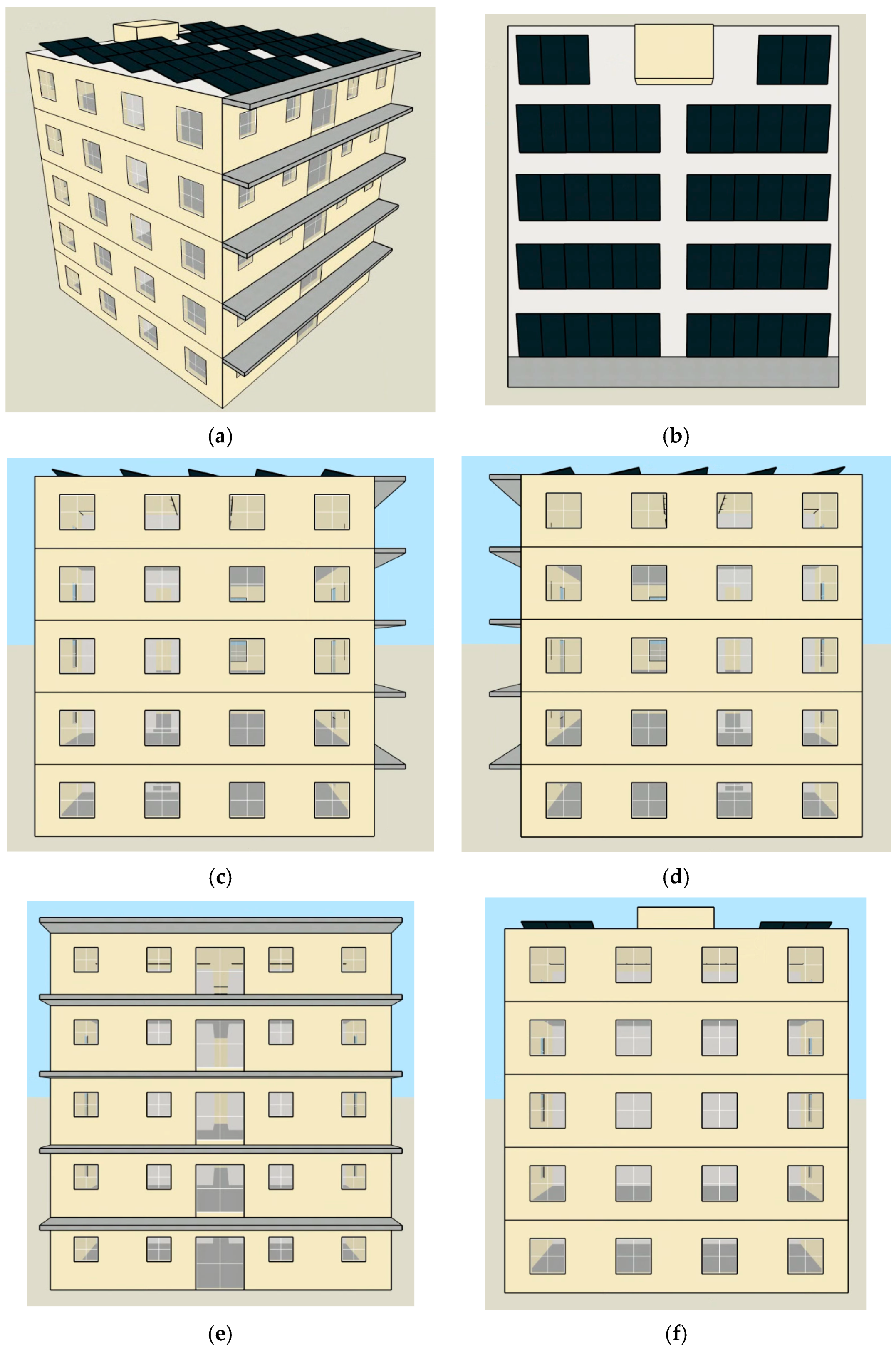
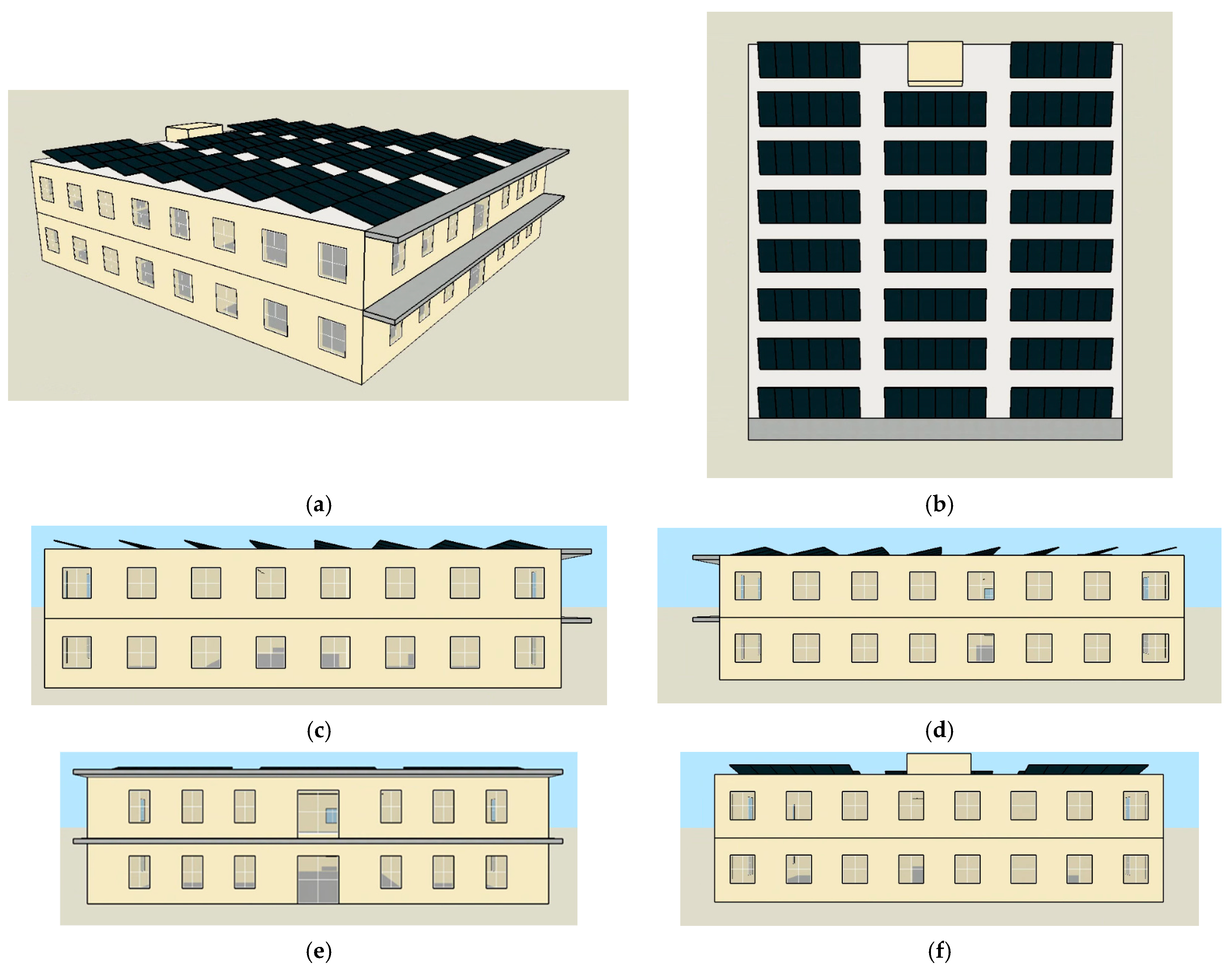

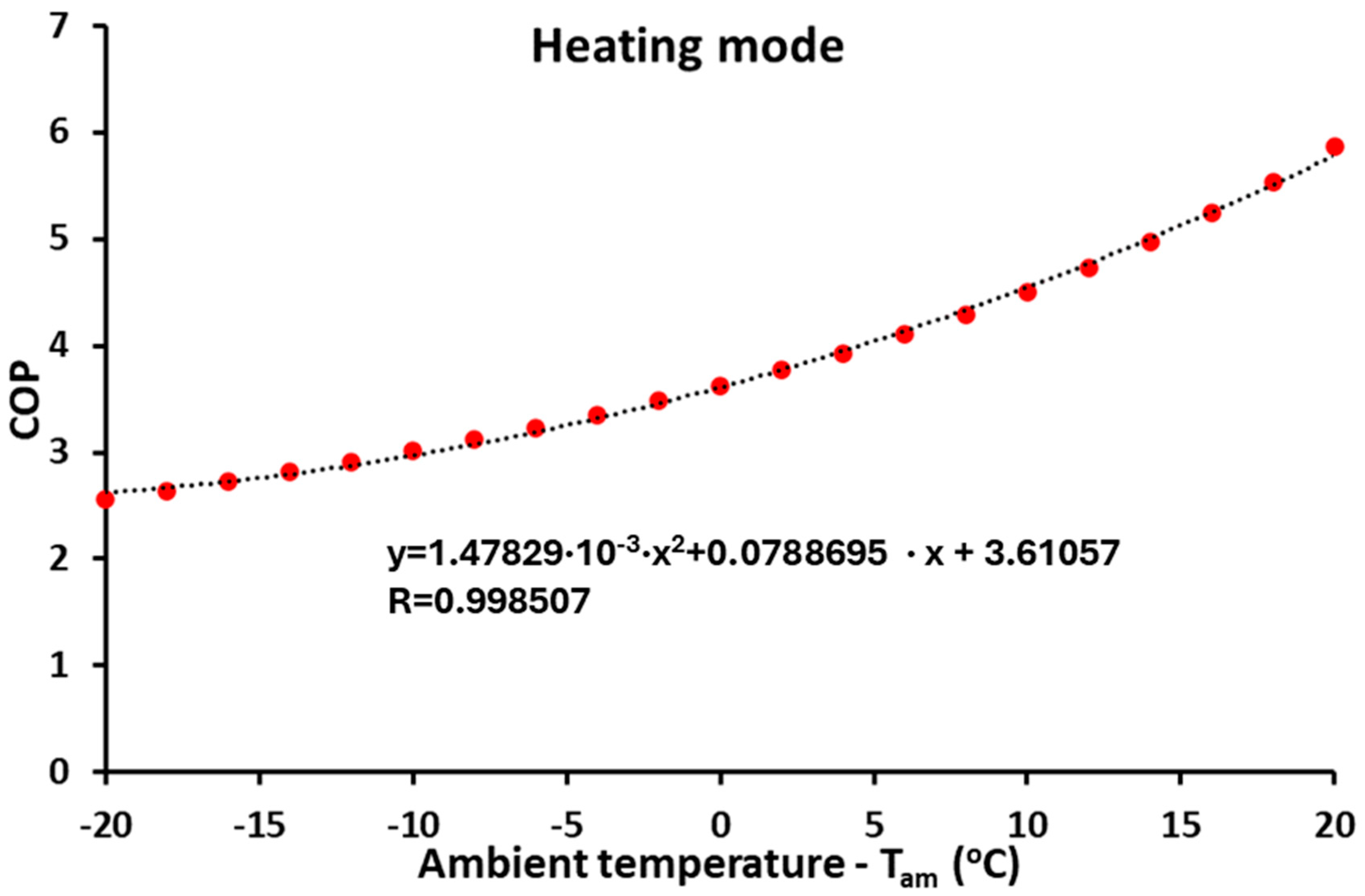

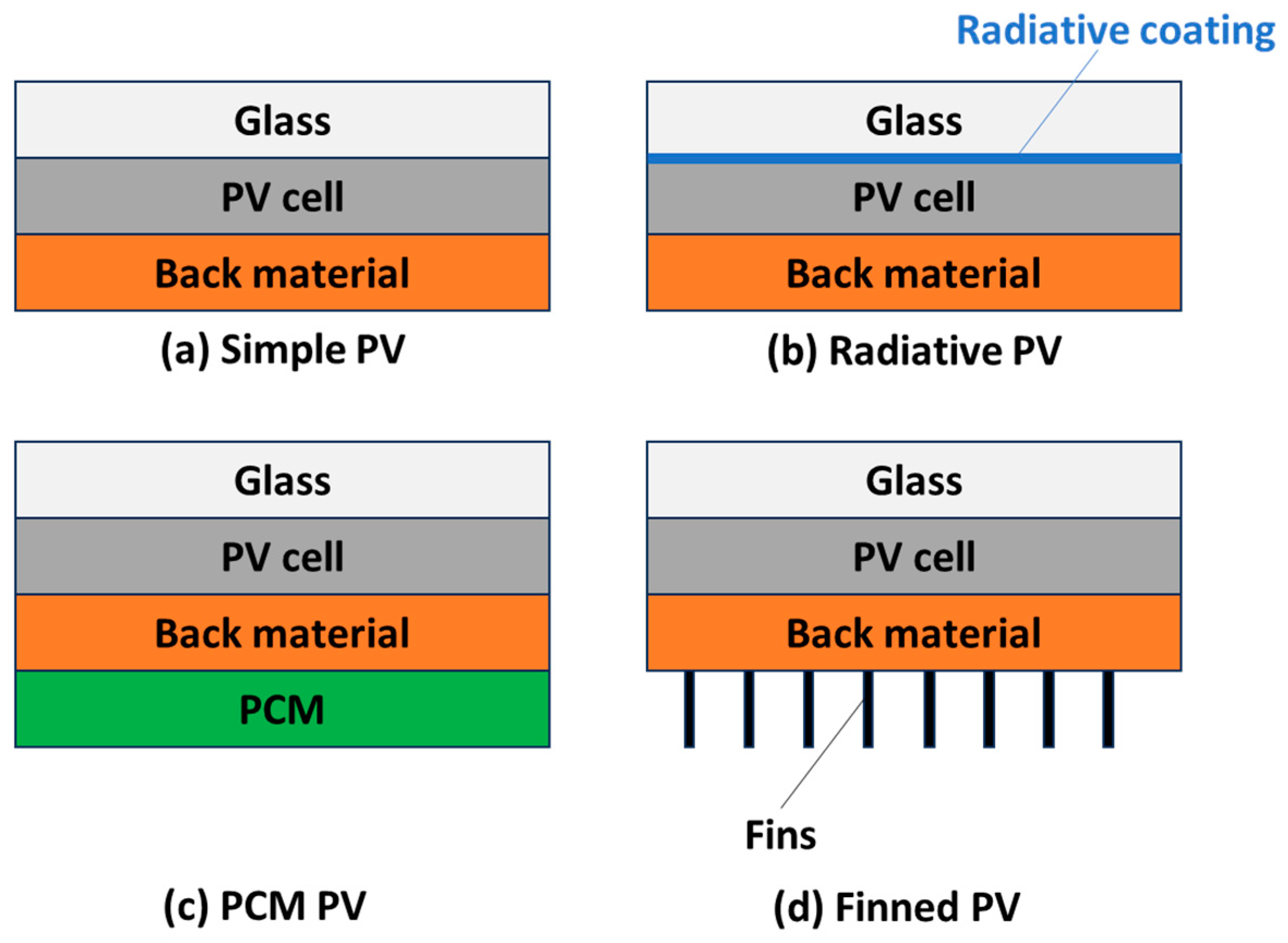


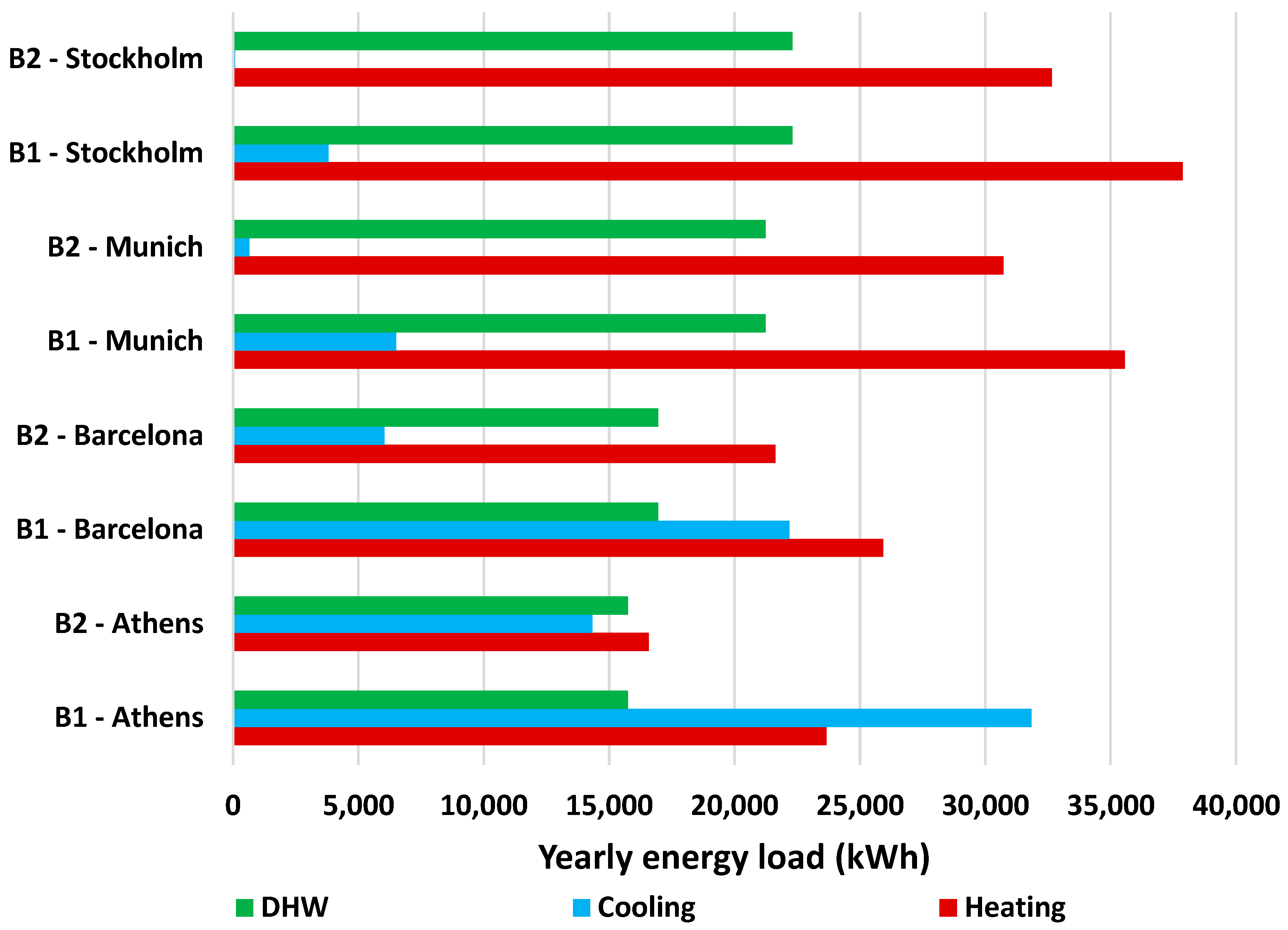
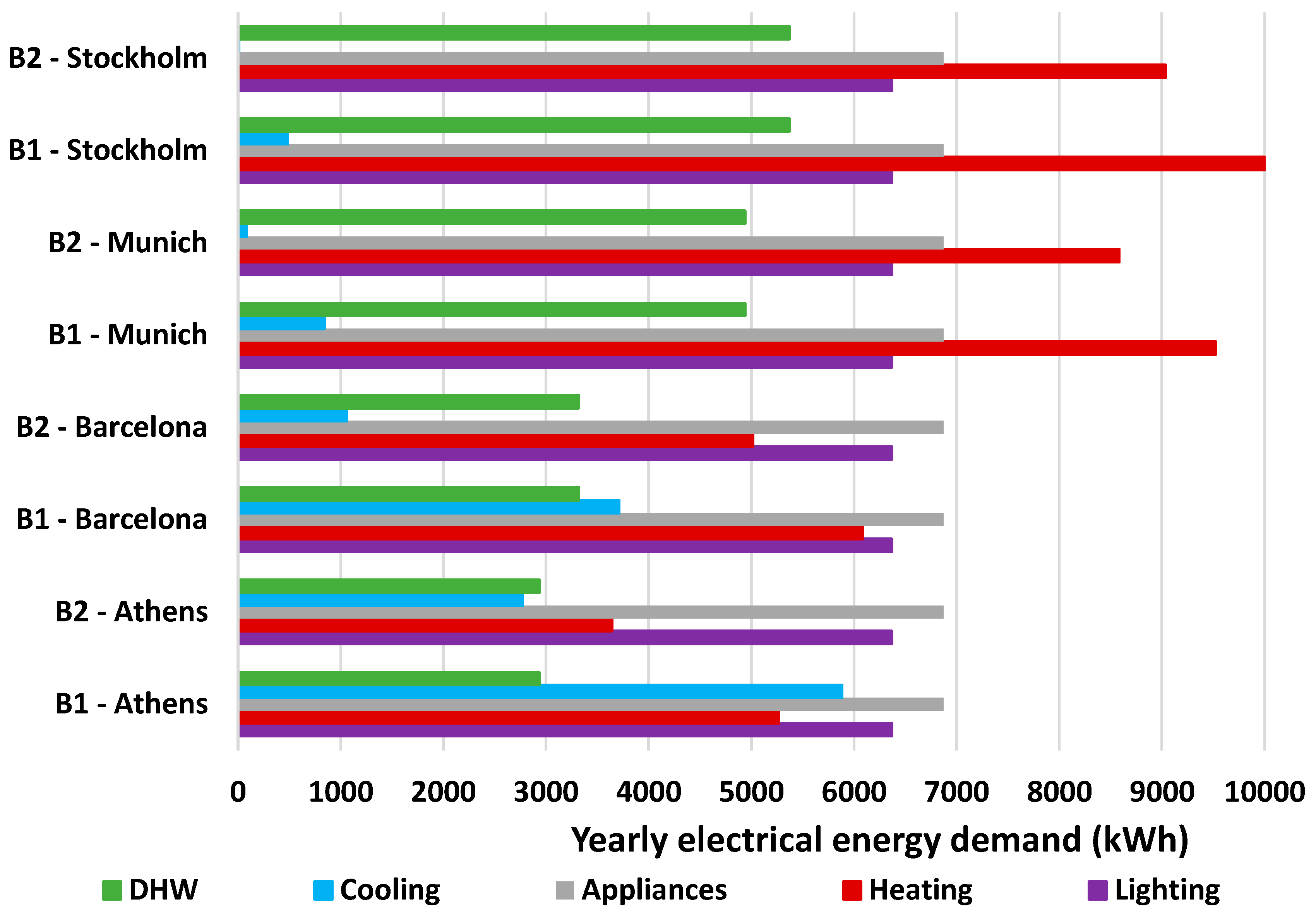
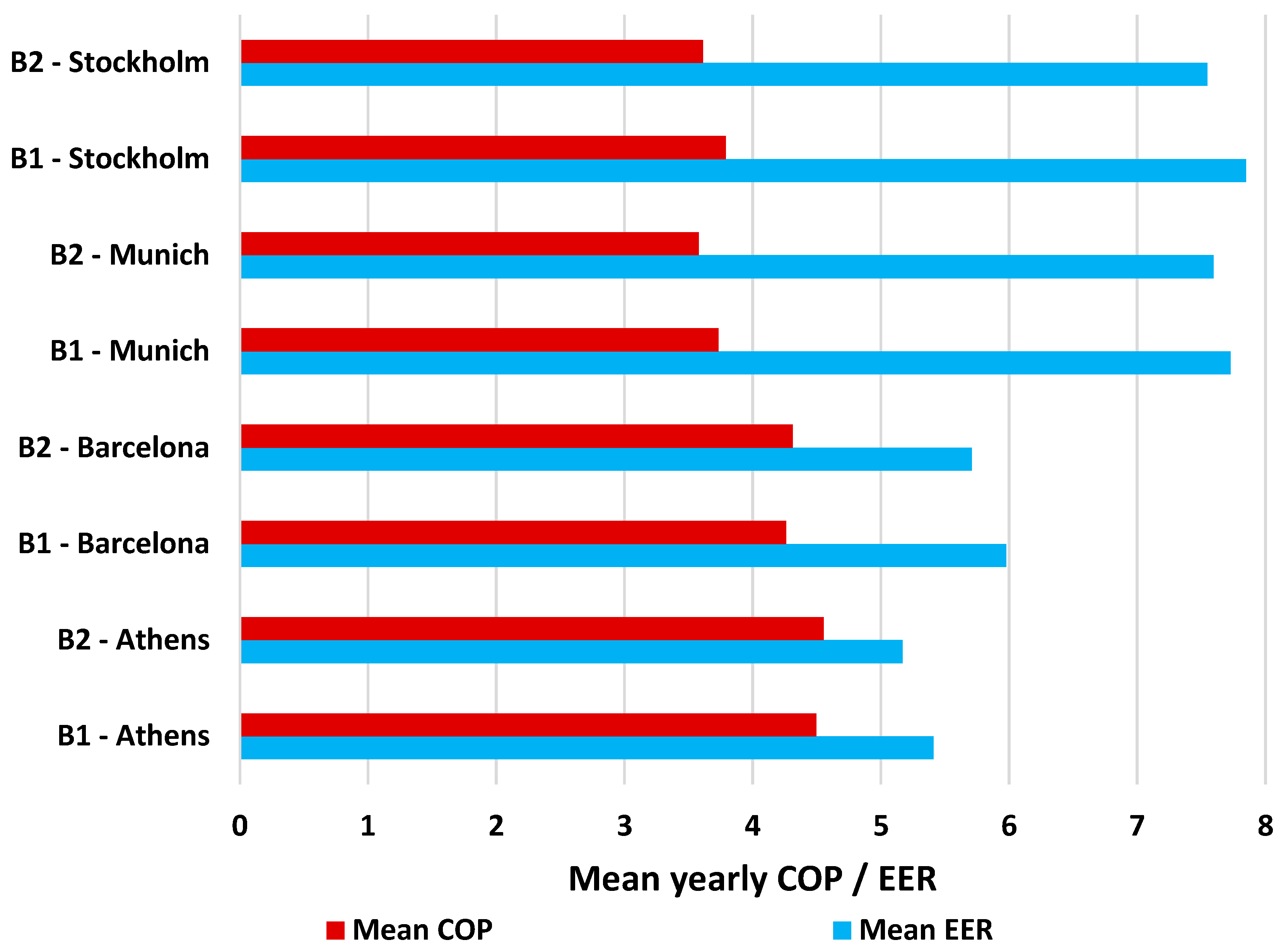


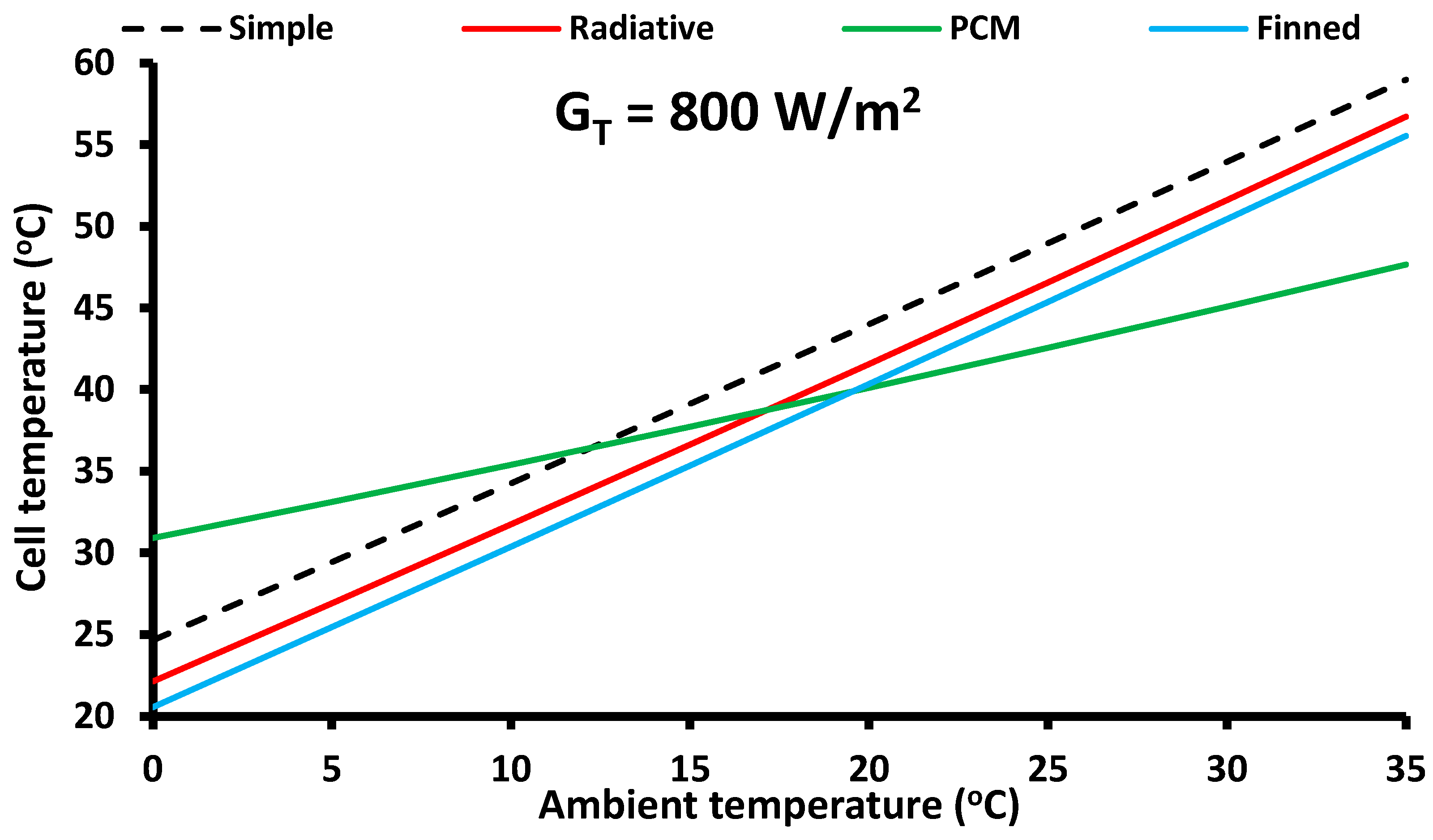
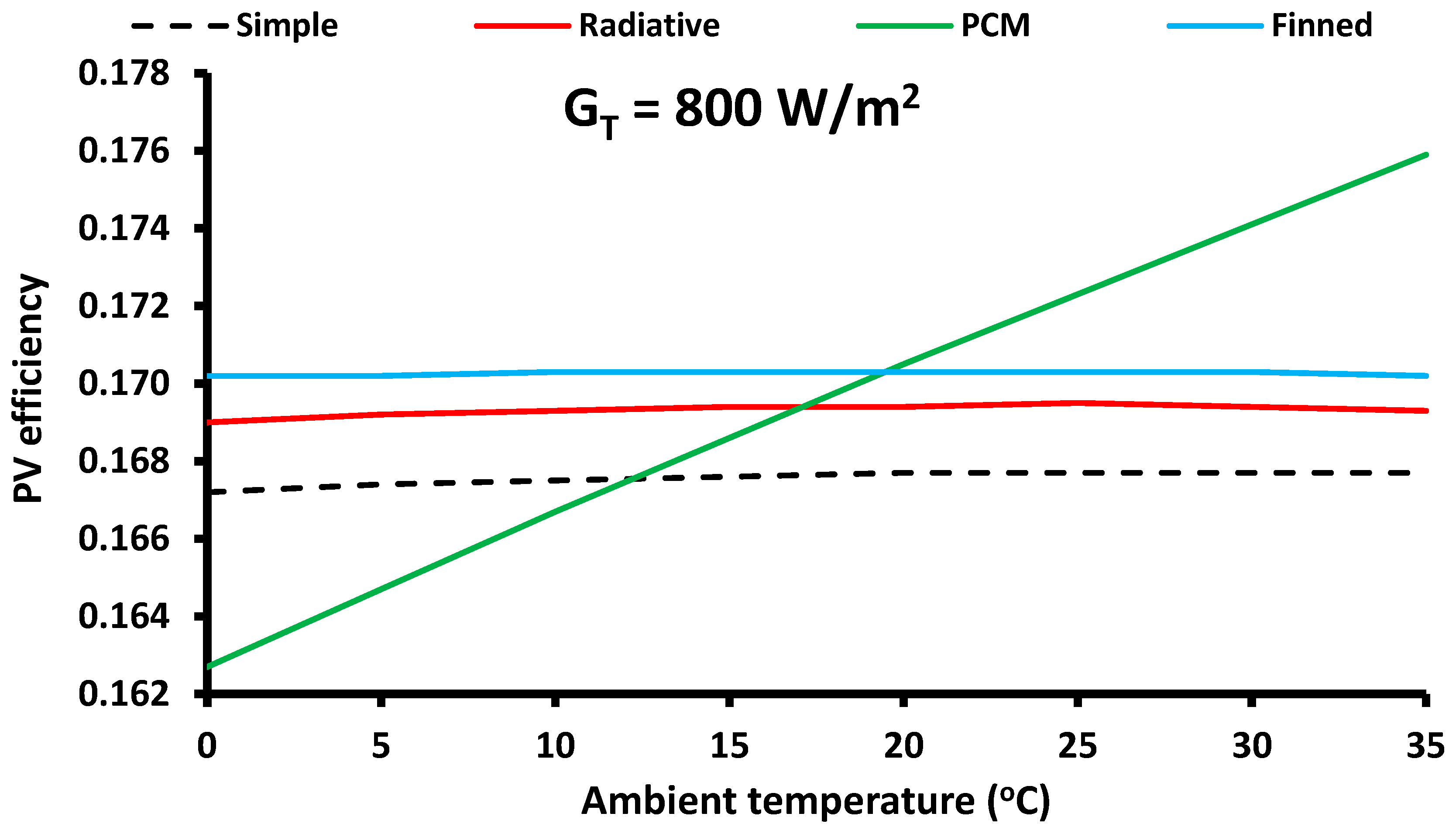
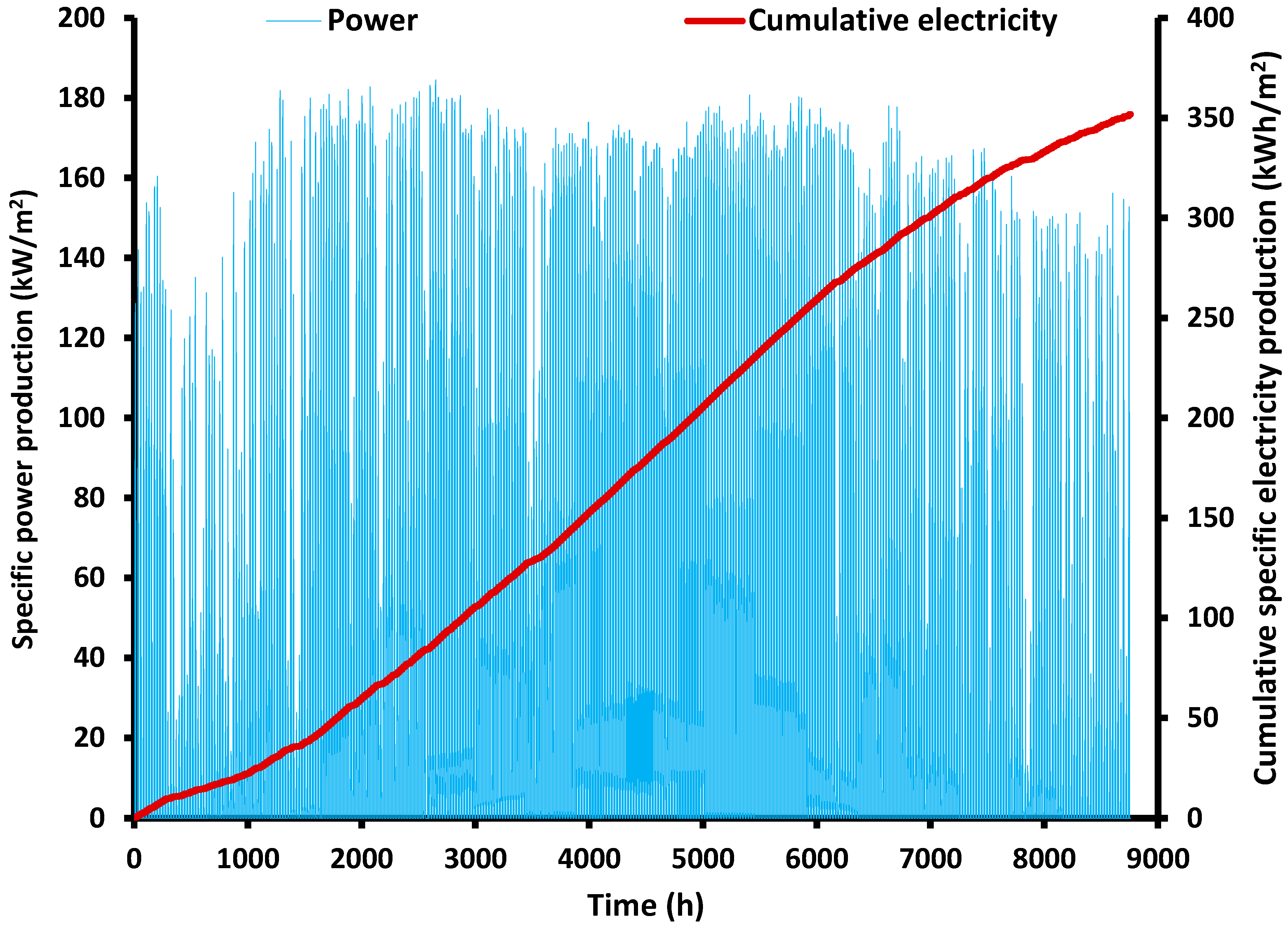
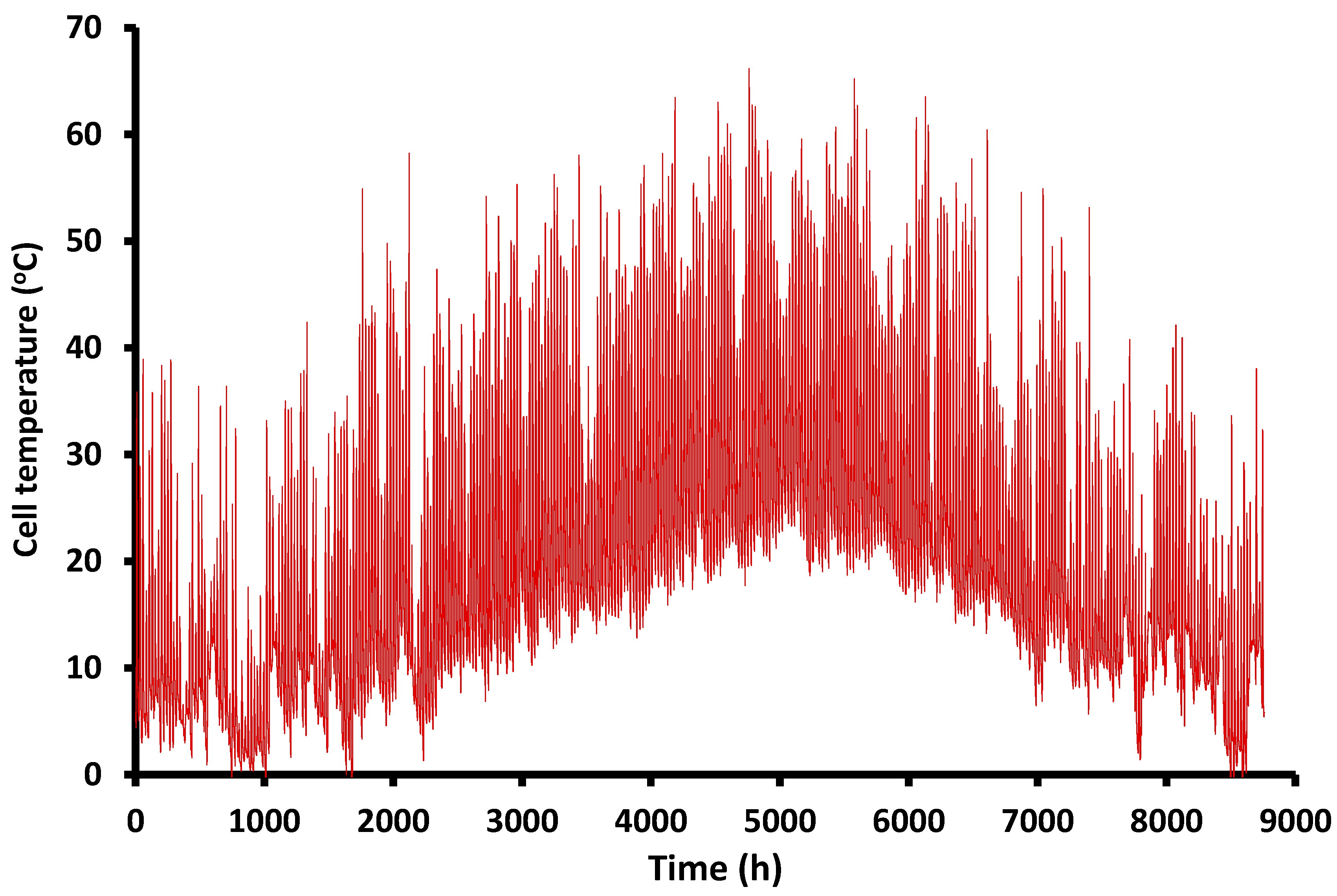
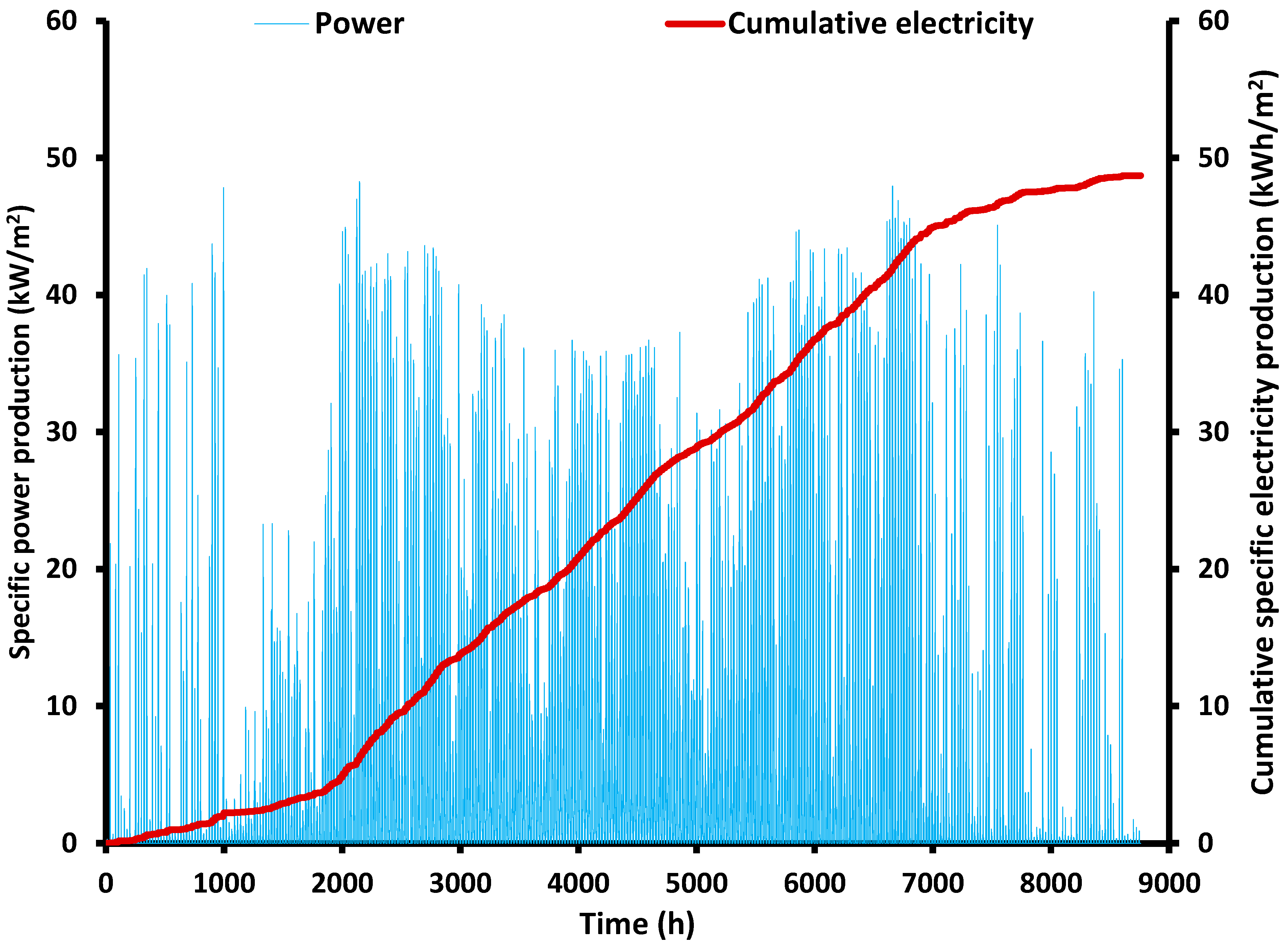
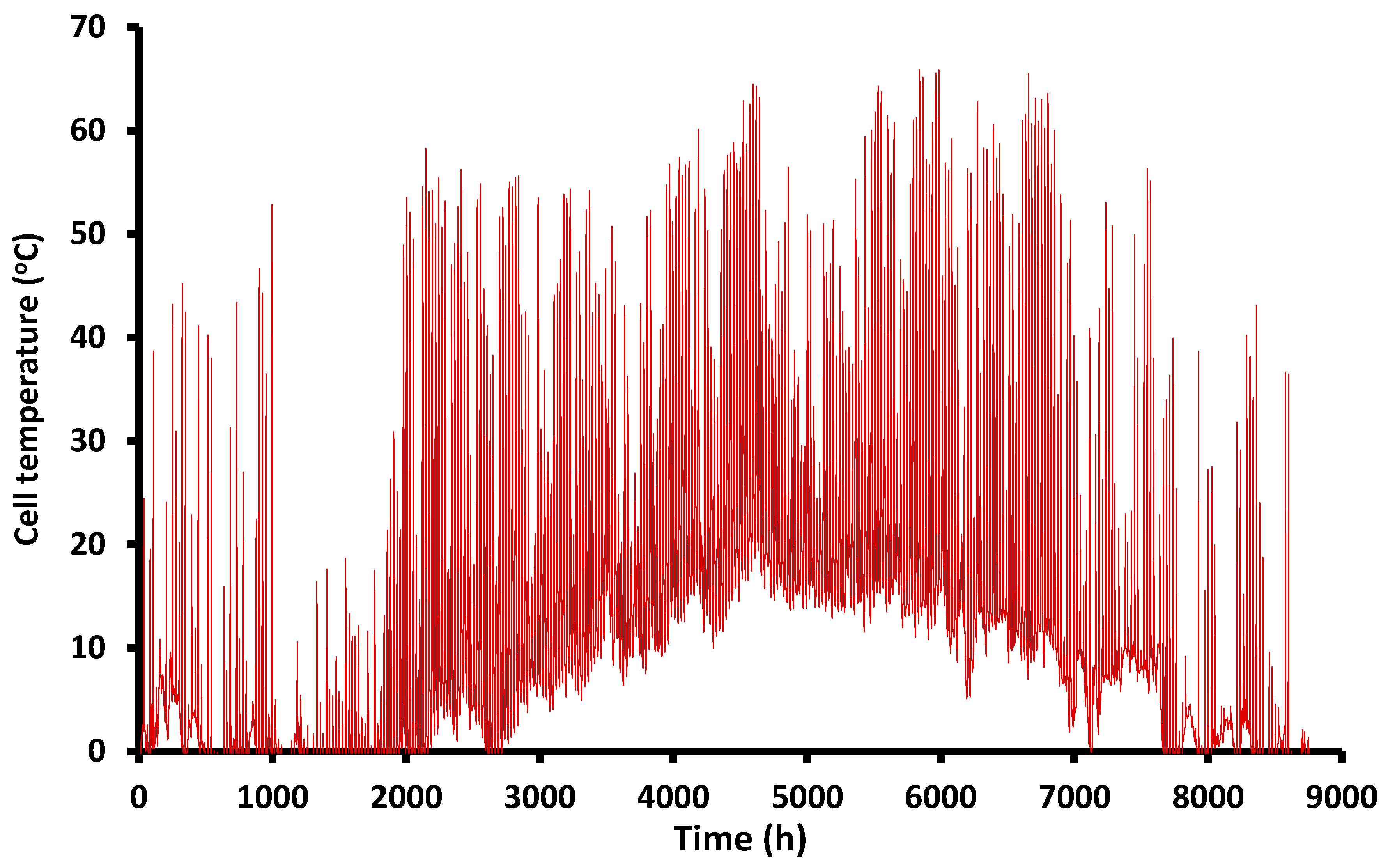
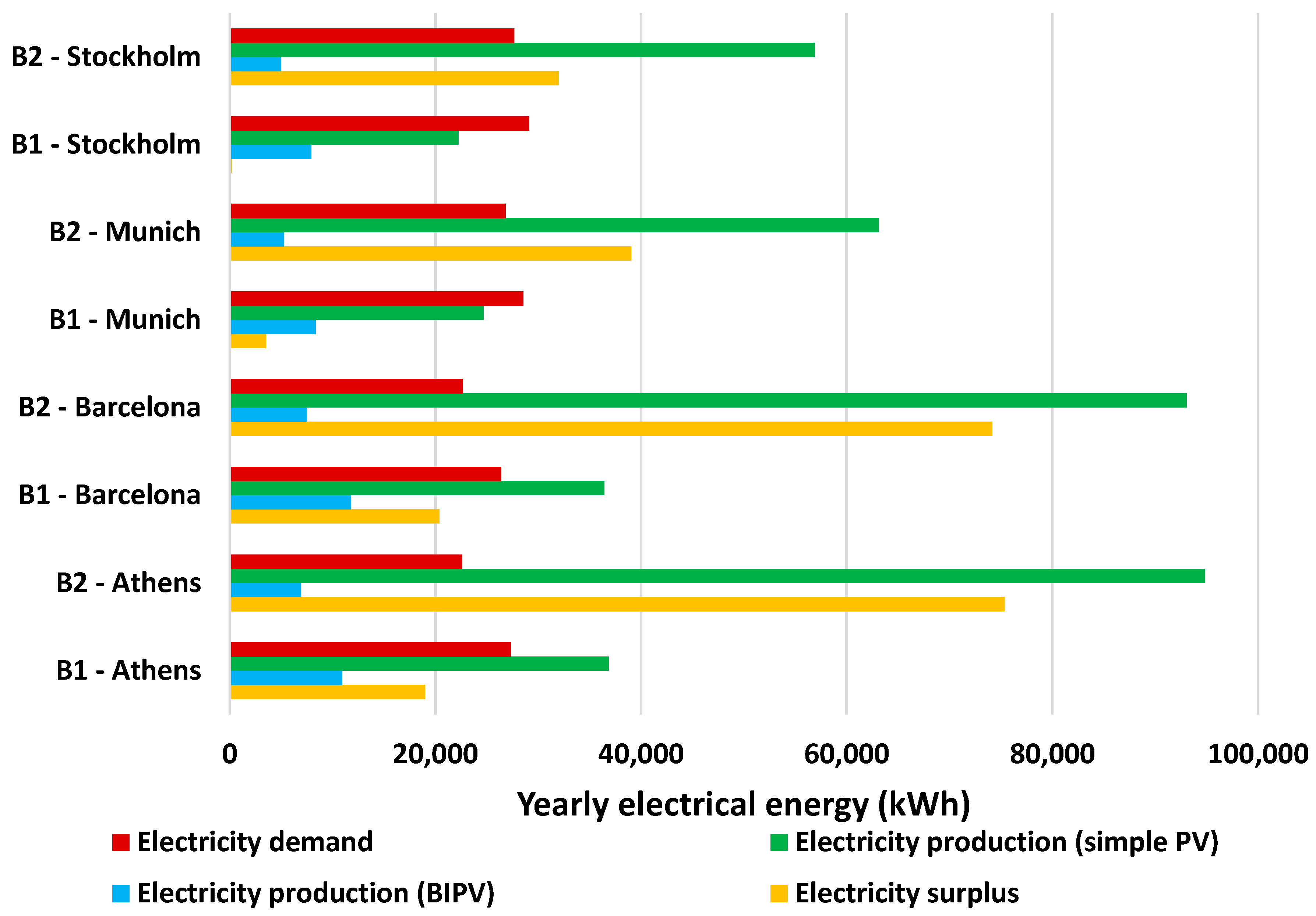

| Parameter | Building B1 | Building B2 |
|---|---|---|
| Gross floor area per floor [m2] | 200 | 500 |
| Roof and ground slab area [m2] | 200 | 500 |
| Total building external surface [m2] | 1249 | 1537 |
| Gross exterior wall area [m2] | 849 | 537 |
| Net wall area [m2] | 679 | 429 |
| Total windows area [m2] | 170 | 107 |
| Window-to-wall ratio | 0.2 | 0.2 |
| Number of floors | 5 | 2 |
| Floor height [m] | 3 | 3 |
| Gross building volume [m3] | 3000 | 3000 |
| Ratio of total external surface to volume [m2/m3] | 0.416 | 0.512 |
| Parameter | Value |
|---|---|
| Winter temperature setpoint | 20 °C |
| Summer temperature setpoint | 26 °C |
| Occupants | 30 |
| Thermal load per occupants | 80 W/occupant |
| Specific lighting electrical load | 4 W/m2 |
| Specific appliances’ electrical load | 2 W/m2 |
| Average operating fraction of the occupants | 0.75 |
| Average operating fraction of the lighting | 0.75 |
| Average operating fraction of the appliances | 0.75 |
| Infiltration rate | 0.4 ACH |
| Natural ventilation rate | 0.8 ACH |
| DHW temperature setpoint | 45 °C |
| DHW demand | 50 L/day/person |
| Parameter | Athens | Barcelona | Munich | Stockholm |
|---|---|---|---|---|
| Mean yearly air temperature [°C] | 18.0 | 14.6 | 9.0 | 7.5 |
| Mean yearly water temperature [°C] | 17.0 | 14.0 | 8.0 | 6.5 |
| Total horizontal irradiation [kWh/m2] | 1832 | 1630 | 1194 | 997 |
| Heating degree days | 1041 | 1658 | 3358 | 3812 |
| Cooling degree days | 588 | 108 | 11 | 1 |
| U-Value [W/m2 K] | ||||
|---|---|---|---|---|
| Structural Construction | Athens | Barcelona | Munich | Stockholm |
| External Walls | 0.45 | 0.49 | 0.21 | 0.18 |
| Roof Slab | 0.4 | 0.4 | 0.15 | 0.13 |
| Ground Slab | 0.8 | 0.75 | 0.263 | 0.15 |
| Windows | 2.6 | 2.1 | 1.05 | 1.2 |
| Mean U-value of entire thermal envelope [W/m2 K] | ||||
| Building B1 | 0.726 | 0.568 | 0.676 | 0.536 |
| Building B2 | 0.568 | 0.676 | 0.536 | 0.302 |
| Parameter | Value |
|---|---|
| Simple PV | |
| Module length [m] | 1.9556 |
| Module width [m] | 0.992 |
| Module area, APV [m2] | 1.94 |
| Reference efficiency, ηref | 0.185 |
| Thermal loss coefficient, β [K−1] | 0.0039 |
| Upper emittance, εu | 0.7 |
| Down emittance, εd | 0.7 |
| Glass transmittance, τ | 0.94 |
| Cell absorptance, α | 0.92 |
| Back material thermal conductivity, kb [W/mK] | 0.15 |
| Back material thickness, tb [m] | 0.01 |
| Radiative PV | |
| Upper emittance, εu | 0.95 |
| PCM PV | |
| Melting temperature, Tmelt [°C] | 25 |
| Finned PV | |
| Number of the fins, Nfin | 200 |
| Length of the fin, Lfin [m] | 0.12 |
| Width of the fin, Wfin [m] | 0.1 |
| Thickness of the fin, tfin [m] | 0.005 |
| Thermal conductivity of the fin, kfin [W/mK] | 237 |
| BIPV | |
| Module length [m] | 1.245 |
| Module width [m] | 0.3 |
| Module area, ABIPV [m2] | 1.375 |
| Reference efficiency, ηref | 0.056 |
| Thermal loss coefficient, β [K−1] | 0.0019 |
| PV parameter, f | 0.0538 |
| Parameter | Athens | Barcelona | Munich | Stockholm | ||||
|---|---|---|---|---|---|---|---|---|
| (kWh) | B1 | B2 | B1 | B2 | B1 | B2 | B1 | B2 |
| Heating load | 23,669 | 16,585 | 25,927 | 21,632 | 35,570 | 30,725 | 37,879 | 32,651 |
| Cooling load | 31,834 | 14,337 | 22,191 | 6038 | 65,01 | 645 | 3799 | 76 |
| DHW load | 15,748 | 15,748 | 16,960 | 16,960 | 21,236 | 21,236 | 22,301 | 22,301 |
| Electricity for heating | 5266 | 3643 | 6084 | 5017 | 9524 | 8583 | 9999 | 9035 |
| Electricity for cooling | 5885 | 2773 | 3712 | 1058 | 841 | 85 | 484 | 10 |
| Electricity for DHW | 2935 | 2935 | 3317 | 3317 | 4939 | 4939 | 5370 | 5370 |
| Electricity for appliances | 6871 | 6871 | 6871 | 6871 | 6871 | 6871 | 6871 | 6871 |
| Electricity for lighting | 6368 | 6368 | 6368 | 6368 | 6368 | 6368 | 6368 | 6368 |
| Total electricity | 27,324 | 22,590 | 26,352 | 22,631 | 28,543 | 26,846 | 29,092 | 27,654 |
| Mean COP | 4.495 | 4.553 | 4.262 | 4.312 | 3.735 | 3.580 | 3.788 | 3.614 |
| Mean EER | 5.410 | 5.169 | 5.978 | 5.709 | 7.728 | 7.595 | 7.848 | 7.545 |
| Parameter | Athens | Barcelona | Munich | Stockholm | ||||
|---|---|---|---|---|---|---|---|---|
| (kWh) | B1 | B2 | B1 | B2 | B1 | B2 | B1 | B2 |
| Electricity production | ||||||||
| Simple PV | 35,374 | 90,400 | 34,706 | 88,692 | 23,505 | 60,069 | 21,253 | 54,313 |
| Radiative PV | 35,571 | 90,905 | 34,908 | 89,210 | 23,671 | 60,493 | 21,363 | 54,595 |
| PCM PV | 35,595 | 90,966 | 34,714 | 88,714 | 23,368 | 59,717 | 21,007 | 53,686 |
| Finned PV | 35,619 | 91,027 | 34,957 | 89,335 | 23,714 | 60,604 | 21,376 | 54,627 |
| BIPV | 10,931 | 6910 | 11,785 | 7450 | 8359 | 5284 | 7928 | 5012 |
| Positive electricity production | ||||||||
| Simple PV + BIPV | 18,981 | 74,721 | 20,139 | 73,511 | 3321 | 38,507 | 89 | 31,671 |
| Radiative + BIPV | 19,178 | 75,225 | 20,341 | 74,029 | 3487 | 38,931 | 199 | 31,953 |
| PCM + BIPV | 19,202 | 75,287 | 20,147 | 73,533 | 3184 | 38,155 | −157 | 31,044 |
| Finned PV + BIPV | 19,226 | 75,347 | 20,390 | 74,155 | 3531 | 39,042 | 212 | 31,985 |
Disclaimer/Publisher’s Note: The statements, opinions and data contained in all publications are solely those of the individual author(s) and contributor(s) and not of MDPI and/or the editor(s). MDPI and/or the editor(s) disclaim responsibility for any injury to people or property resulting from any ideas, methods, instructions or products referred to in the content. |
© 2024 by the authors. Licensee MDPI, Basel, Switzerland. This article is an open access article distributed under the terms and conditions of the Creative Commons Attribution (CC BY) license (https://creativecommons.org/licenses/by/4.0/).
Share and Cite
Mitsopoulos, G.; Kapsalis, V.; Tolis, A.; Karamanis, D. Innovative Photovoltaic Technologies Aiming to Design Zero-Energy Buildings in Different Climate Conditions. Appl. Sci. 2024, 14, 8950. https://doi.org/10.3390/app14198950
Mitsopoulos G, Kapsalis V, Tolis A, Karamanis D. Innovative Photovoltaic Technologies Aiming to Design Zero-Energy Buildings in Different Climate Conditions. Applied Sciences. 2024; 14(19):8950. https://doi.org/10.3390/app14198950
Chicago/Turabian StyleMitsopoulos, Georgios, Vasileios Kapsalis, Athanasios Tolis, and Dimitrios Karamanis. 2024. "Innovative Photovoltaic Technologies Aiming to Design Zero-Energy Buildings in Different Climate Conditions" Applied Sciences 14, no. 19: 8950. https://doi.org/10.3390/app14198950







